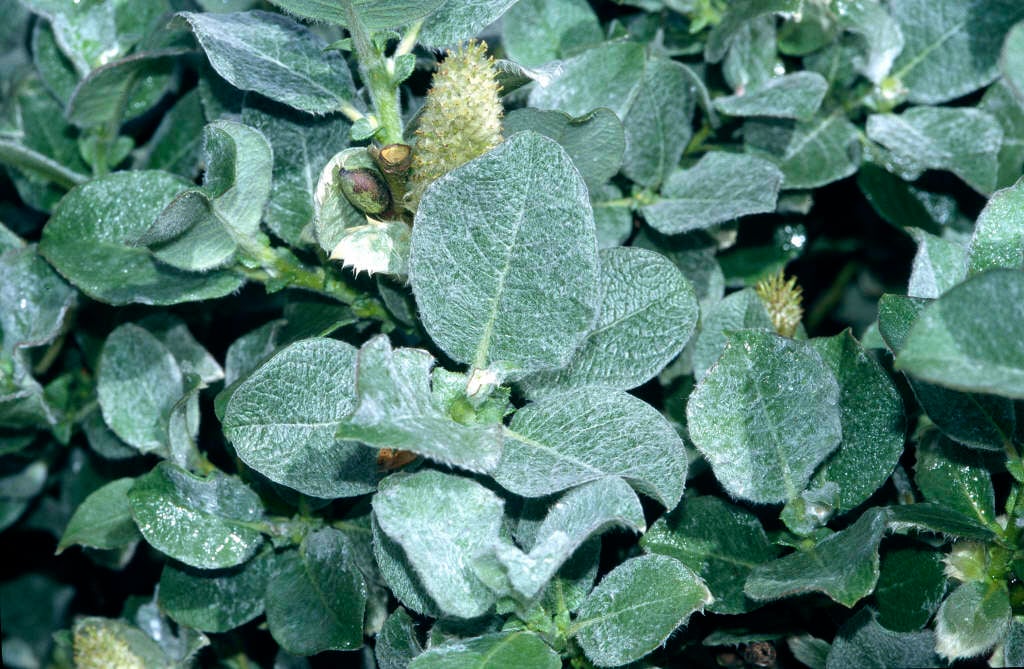Salix lanata

woolly willow
A small, bushy deciduous shrub to around 1m in height, with rounded, mealy, silvery dark green foliage to 6cm in length. Golden-yellow male catkins to 5cm, or grey-yellow female catkins to 8cm long appear in late spring with the foliage

Buy this plant
Size
Ultimate height
1–1.5 metresTime to ultimate height
10–20 yearsUltimate spread
1–1.5 metresGrowing conditions
Moisture
Moist but well–drained, Well–drainedpH
Acid, Alkaline, NeutralColour & scent
| Stem | Flower | Foliage | Fruit | |
| Spring | Grey Silver Yellow | Grey Silver | ||
|---|---|---|---|---|
| Summer | Grey Silver | |||
| Autumn | Grey Silver | |||
| Winter |
Position
- Full sun
- Partial shade
Aspect
South–facing or East–facing or West–facing
Exposure
Exposed or Sheltered Hardiness
H7Botanical details
- Family
- Salicaceae
- Native to GB / Ireland
- Yes
- Foliage
- Deciduous
- Habit
- Bushy
- Genus
Salix are deciduous shrubs and trees of diverse habit, with simple leaves and tiny flowers in catkins, male and female usually on separate plants. Some are valued for their brightly coloured winter shoots, others for their foliage or showy male catkins
- Name status
Correct
- Plant range
- Arctic N Asia Europe
How to grow
Cultivation
Easy to grow on most soils in sun or partial shade; producing a small compact bushy shrub
Propagation
Propagate by softwood cuttings in early summer or hardwood cuttings in winter
Suggested planting locations and garden types
- City and courtyard gardens
- Cottage and informal garden
- Coastal
- Wildlife gardens
- Cut flowers
- Flower borders and beds
Pruning
Pests
May be susceptible to aphids, caterpillars, leaf beetles, sawflies, willow scale
Diseases
May be susceptible to willow anthracnose, scab, canker, honey fungus and rust
Get involved
The Royal Horticultural Society is the UK’s leading gardening charity. We aim to enrich everyone’s life through plants, and make the UK a greener and more beautiful place.